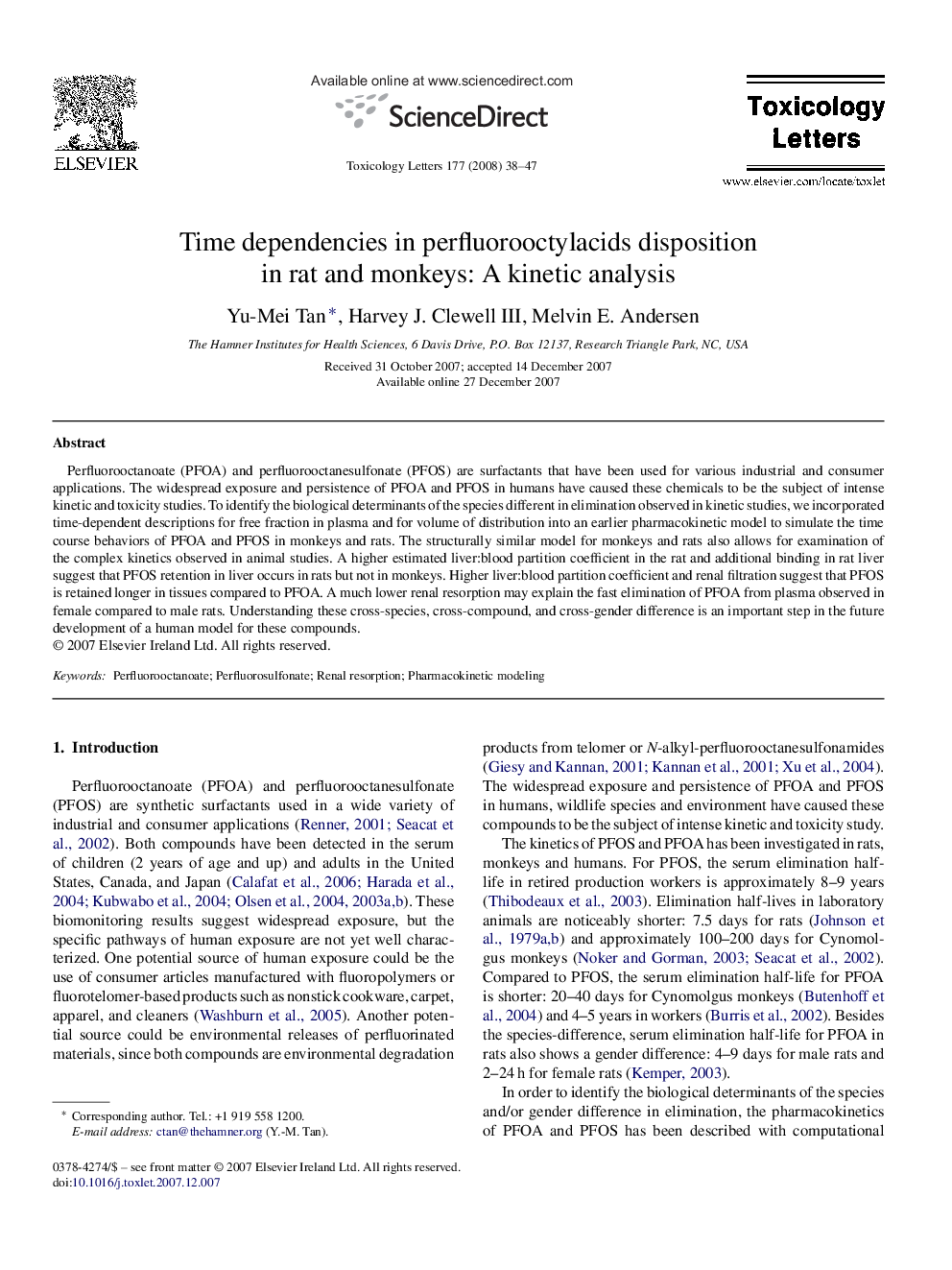| Article ID | Journal | Published Year | Pages | File Type |
|---|---|---|---|---|
| 2601423 | Toxicology Letters | 2008 | 10 Pages |
Perfluorooctanoate (PFOA) and perfluorooctanesulfonate (PFOS) are surfactants that have been used for various industrial and consumer applications. The widespread exposure and persistence of PFOA and PFOS in humans have caused these chemicals to be the subject of intense kinetic and toxicity studies. To identify the biological determinants of the species different in elimination observed in kinetic studies, we incorporated time-dependent descriptions for free fraction in plasma and for volume of distribution into an earlier pharmacokinetic model to simulate the time course behaviors of PFOA and PFOS in monkeys and rats. The structurally similar model for monkeys and rats also allows for examination of the complex kinetics observed in animal studies. A higher estimated liver:blood partition coefficient in the rat and additional binding in rat liver suggest that PFOS retention in liver occurs in rats but not in monkeys. Higher liver:blood partition coefficient and renal filtration suggest that PFOS is retained longer in tissues compared to PFOA. A much lower renal resorption may explain the fast elimination of PFOA from plasma observed in female compared to male rats. Understanding these cross-species, cross-compound, and cross-gender difference is an important step in the future development of a human model for these compounds.
